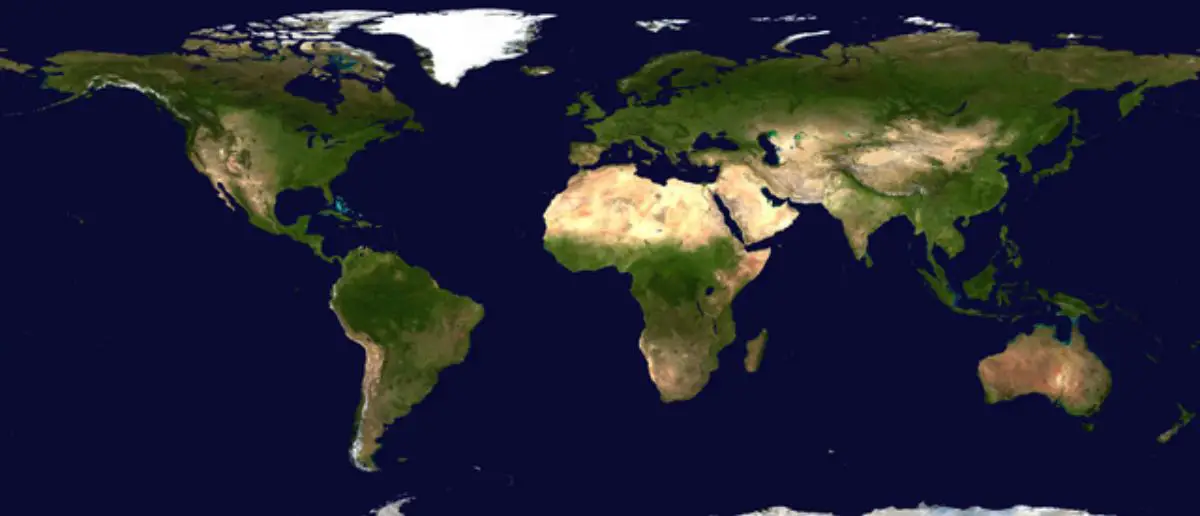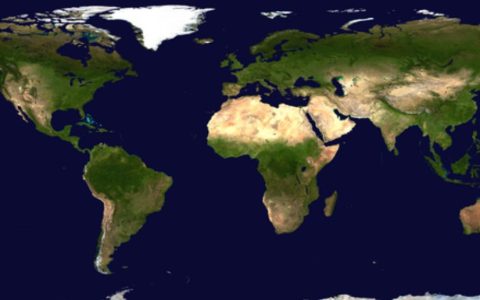
Donald Trump promised peace in his second term. It’s up to him to deliver.
And now President Trump’s just provided the nation with a critical update on international war.
Trump and Putin Have High-Stakes Call On Navigating Ukraine’s Drone Assault and Iran’s Nuclear Ambitions
On a phone call on Wednesday, President Donald Trump and Russian President Vladimir Putin discussed the escalating tensions following Ukraine’s audacious drone attacks on Russian airfields and the stalled U.S.-Iran nuclear negotiations. The hour-and-fifteen-minute conversation, described by Trump as a “good conversation, but not a conversation that will lead to immediate Peace,” highlighted the delicate balance of diplomacy amid rising global conflicts. Trump’s leadership in engaging directly with Putin reflects his commitment to assertive foreign policy, though the path to resolution remains fraught with challenges.
The call came days after Ukraine launched a covert operation, smuggling drones in containers over months to strike deep within Russian territory, including as far as Siberia. Ukraine claims the attacks damaged nearly a third of Russia’s strategic bombing fleet, including assets capable of carrying nuclear payloads. “President Putin did say, and very strongly, that he will have to respond to the recent attack on the airfields,” Trump noted in a Truth Social post. This retaliation could further destabilize the region, where Russia and Ukraine have been locked in a brutal three-year war with no significant territorial gains on either side.
The Russia-Ukraine conflict, which began in February 2022, has claimed countless lives and displaced millions, with front lines largely static despite intense fighting. Peace talks in Istanbul on Monday yielded little progress, highlighting the war’s intractability. Vice President JD Vance, in April, suggested the U.S. might consider stepping back from mediation if both sides fail to show serious commitment to peace. Trump’s willingness to engage directly with Putin demonstrates his determination to keep diplomatic channels open, even as Ukraine’s aggressive tactics complicate negotiations.
Beyond Ukraine, the Trump-Putin call addressed Iran’s nuclear ambitions, a pressing issue as Tehran’s uranium enrichment program advances. “We also discussed Iran, and the fact that time is running out on Iran’s decision pertaining to nuclear weapons, which must be made quickly!” Trump wrote. He emphasized his stance: “I stated to President Putin that Iran cannot have a nuclear weapon and, on this, I believe that we were in agreement.” Putin offered to assist in U.S.-Iran talks, suggesting Russia could play a role in breaking the current impasse.
Russia’s relationship with Iran has deepened since the Ukraine war began, driven by mutual opposition to Western sanctions. In 2024, Iran supplied Russia with missiles for the Ukraine front, receiving Russian fighter jets in return. This alliance complicates Trump’s efforts to curb Iran’s nuclear program, as Tehran remains defiant. Reports on Monday suggested the Trump administration might allow limited uranium enrichment, but Trump swiftly denied these claims, reaffirming his hardline stance against any enrichment.
Iran’s rejection of the U.S. proposal on Wednesday, vowing to continue its nuclear enrichment, adds urgency to the situation. Trump’s firm position aligns with his goal of preventing nuclear proliferation, a cornerstone of his foreign policy. Putin’s willingness to engage in these discussions, as Trump noted, “could, perhaps, be helpful in getting this brought to a rapid conclusion,” offering a potential diplomatic lifeline, though skepticism remains about Russia’s motives given its ties to Iran.
The Ukraine war’s origins trace back to Russia’s annexation of Crimea in 2014, followed by its full-scale invasion in 2022, driven by Putin’s aim to counter NATO’s expansion. Ukraine’s resilience, bolstered by Western aid, has prolonged the conflict, with both sides suffering heavy losses. The recent drone attacks mark a bold escalation, showcasing Ukraine’s ability to strike deep into Russian territory. This development risks provoking a severe Russian response, further complicating Trump’s efforts to broker peace.
The coming weeks will test Trump’s diplomatic acumen as he balances pressure on Iran with the need to de-escalate tensions in Ukraine. Putin’s pledge to retaliate against Ukraine’s drone strikes looms large, while Iran’s defiance on nuclear enrichment demands a swift response. Trump’s leadership in these high-stakes discussions positions him as a central figure in shaping the course of these conflicts, with the world watching closely.
Russia and Ukraine Present Conflicting Demands in Peace Talks
Russia and Ukraine have laid out starkly opposing conditions for a ceasefire and a potential peace treaty to end the war that began with Moscow’s invasion on February 24, 2022. Russia’s recently submitted memorandum, presented ahead of direct peace talks in Istanbul, reiterates the Kremlin’s longstanding demands, which Kyiv and its Western allies have consistently rejected as unacceptable. The document, reported in Russian media, outlines Moscow’s vision for a resolution, while Ukraine’s counter-memorandum emphasizes its sovereignty and refusal to concede to Russian terms.
Russia’s memorandum offers two options for a 30-day ceasefire. The first requires Ukraine to withdraw its forces from Donetsk, Luhansk, Zaporizhzhia, and Kherson—regions Moscow illegally annexed in September 2022 but has not fully controlled. The second, described as the “package” proposal, demands that Ukraine halt its military mobilization, freeze Western arms deliveries, and begin demobilizing its forces. It also calls for Ukraine to end martial law, hold elections, and prohibit third-country forces on its soil. These conditions align with objectives set by President Vladimir Putin at the war’s outset.
Ukraine, in contrast, entered the Istanbul talks with a clear stance, advocating for an immediate 30-day ceasefire without preconditions, a proposal initially suggested by U.S. President Donald Trump. Kyiv’s memorandum, shared with its allies, rejects any recognition of Russia’s annexation of Crimea in 2014 or the four regions claimed in 2022. It also dismisses demands for neutral status, asserting Ukraine’s right to pursue NATO membership and maintain its military autonomy without restrictions on foreign troops or force size.
The Russian document further insists on “international legal recognition” of Moscow’s territorial claims, including Crimea and the four annexed regions. It calls for Ukraine to limit its armed forces, recognize Russian as an official language alongside Ukrainian, ban “glorification and propaganda of N*zism and neo-N*zism,” and dissolve nationalist groups. These demands reflect Putin’s stated goals from the invasion’s start, including the false narrative—rejected by Kyiv and its allies—that neo-N*zi groups dominate Ukraine’s politics under President Volodymyr Zelenskyy, who is Jewish.
Moscow’s vision for a comprehensive peace treaty includes lifting all sanctions, abandoning claims for wartime damages, resuming trade and communications, and reestablishing diplomatic ties. It also proposes that the treaty be endorsed by a U.N. Security Council resolution. Ukraine’s memorandum, however, prioritizes international security guarantees to prevent further aggression and demands the return of deported Ukrainian children and an “all-for-all” prisoner exchange. It leaves open the possibility of gradually lifting some sanctions if Russia complies with an agreement.
The irreconcilable positions of both sides cast doubt on the prospects for swift progress in negotiations. Russia’s insistence on maximalist terms, undeterred by Western sanctions or diplomatic pressure, suggests a strategy to hold firm rather than compromise. Ukraine’s unwavering commitment to its sovereignty, territorial integrity, and right to choose its alliances further widens the gap between the two parties.
Analysts have noted that Russia’s memorandum may serve as a formalization of its negotiation stance. “Even an unsigned document gives the Kremlin a firmer diplomatic foothold,” said Moscow-based defense analyst Sergei Poletaev. The document’s structure and demands indicate an effort to cement Russia’s position in talks, regardless of immediate outcomes.
Tatiana Stanovaya of the Carnegie Russia Eurasia Center observed that the memorandum reflects Putin’s core objective of securing a “friendly” Ukraine, one detached from Western military or political alliances. This goal, she suggests, remains central to Moscow’s approach, shaping its demands for neutrality and demilitarization.
Ukraine’s memorandum, meanwhile, underscores its rejection of any territorial concessions, using the current line of contact as a starting point for negotiations. It also opposes restrictions on its military capabilities or foreign troop presence, emphasizing that such demands infringe on its sovereignty. Kyiv’s focus on security guarantees highlights its priority to prevent future Russian aggression.
The talks in Istanbul, set against these conflicting frameworks, face significant challenges. Russia’s conditions, rooted in its initial war aims, clash directly with Ukraine’s insistence on maintaining its independence and territorial integrity. The absence of common ground suggests that any agreement will require substantial concessions, which neither side appears ready to offer.





